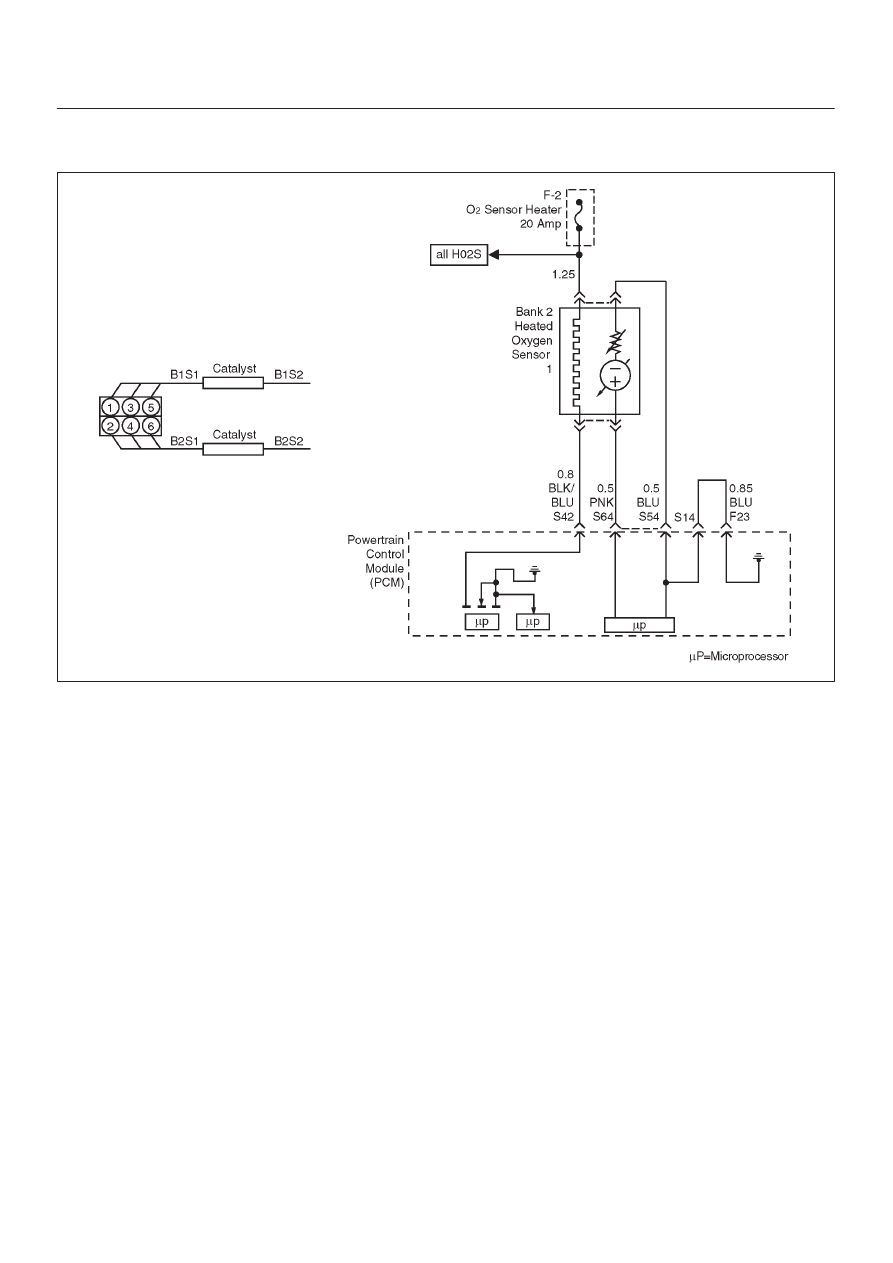Isuzu Trooper (1998-2002 year). Manual - part 455

6E–190
6VE1 3.5 ENGINE DRIVEABILITY AND EMISSIONS
Diagnostic Trouble Code (DTC)
P0153 HO2S Slow Response Bank 2 Sensor 1
D06RY00175
Circuit Description
The powertrain control module (PCM) continuously
monitors the heated oxygen sensor (HO2S) activity for 90
seconds after “closed loop” has been enabled. During the
monitoring period the PCM counts the number of times
that a rich-to-lean and lean-to-rich response is indicated
and adds the amount of time it took to complete all
rich-to-lean transitions and lean-to-rich transitions. With
this information, an average time for rich-to-lean and
lean-to-rich transitions can be determined. If the average
response time of either transition is too slow, a DTC
P0153 will be set.
A lean-to-rich transition is indicated when the HO2S
voltage changes from less than 300 mV to greater than
600 mV. A rich-to-lean transition is indicated when the
HO2S voltage changes from more than 600 mV to less
than 300 mV. An HO2S that responds too slowly is likely
to be faulty and should be replaced.
Conditions for Setting the DTC
D
No related DTCs.
D
Engine coolant temperature (ECT) is above 60
°
C
(140
°
F).
D
The engine is operating in “closed loop”.
D
Engine has been running for over 60 seconds.
D
Canister purge duty cycle is above 2%.
D
Engine speed is between 1500 RPM and 3000 RPM.
D
Mass air flow is between 18 g/second and 42 g/second.
D
All above conditions are met for 3 seconds.
D
90 seconds after “closed loop” has been enabled, Bank
2 HO2S 1 average transition time between 300 mV
and 600 mV is too slow. The lean-to-rich average
transition response time was longer than 94
milliseconds or the rich-to-lean average transition
response time was longer than 105 milliseconds.
Action Taken When the DTC Sets
D
The PCM will illuminate the malfunction indicator lamp
(MIL) after the second consecutive trip in which the
fault is detected.
D
The PCM will store conditions which were present
when the DTC set as Freeze Frame and in the Failure
Records data.
D
“Open loop” fuel control will be in effect.
Conditions for Clearing the MIL/DTC
D
The PCM will turn the MIL “OFF” on the third
consecutive trip cycle during which the diagnostic has
been run and the fault condition is no longer present.
D
A history DTC P0153 will clear after 40 consecutive
warm-up cycles have occurred without a fault.
D
DTC P0153 can be cleared by using the Tech 2 “Clear
Info” function or by disconnecting the PCM battery
feed.